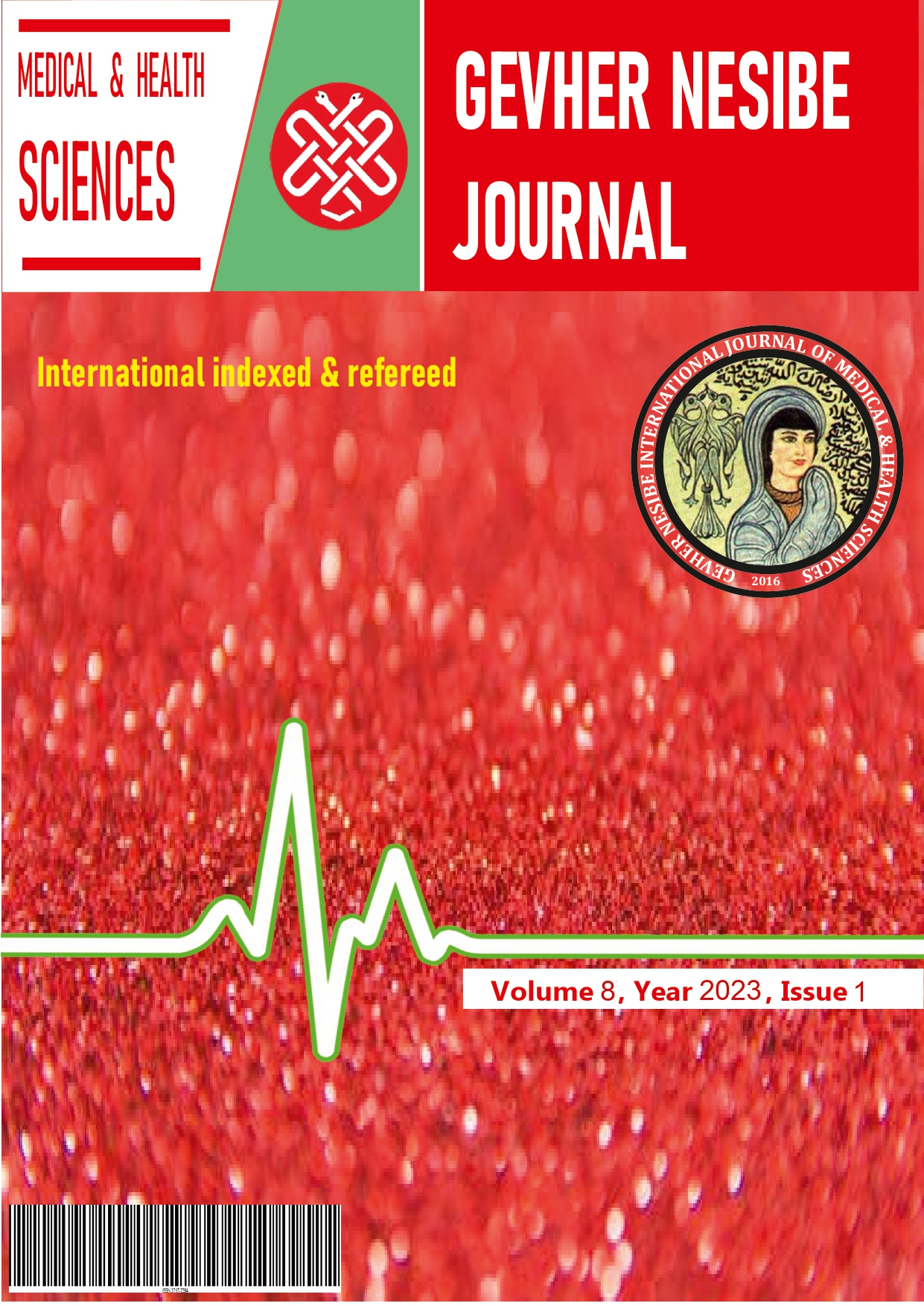The Effect of Home Exercise Program on Motor Developmental Delay and Parental Satisfaction
DOI:
https://doi.org/10.5281/zenodo.7602523Keywords:
Developmental Delay, Home Exercise Program, Motor Development, Parental SatisfactionAbstract
Objectives: The aim of this study is to investigate the effect of Home Exercise Program (HEP) on motor developmental retardation and to what extent parents will be satisfied with this model in children aged 0-2 who have motor developmental delay and are not currently included in a rehabilitation program.
Materials and Methods: We prepared case-specific home programs for the cases who applied to our outpatient clinic, We asked their parents to apply the HEP was given for their child in 3 sessions a day for 8 weeks. Motor development status was evaluated with the Alberta Infant Motor Scale (AIMS). Satisfaction of the parents with the service they received was evaluated with the Patient Satisfaction Questionnaire for the Physical Therapy Polyclinics.
Results: There were improvements in all sub-parameters of AIMS after HEP. These improvements were also statistically significant (p=0.001). While the satisfaction rate of parents with their relationships with physiotherapists is 88.4%, the rate of satisfaction with their relationships with physicians is 82.8%. The factors with the lowest satisfaction rates are physical comfort (61.6%) and technical quality (61.8%), and 88.0% of the parents stated that they would prefer the hospital again, while 86.7% stated that they would recommend it to their relatives.
Conclusion: HEP can be a savior in cases such as not leaving the baby without treatment until the physiotherapy program starts, initiating early intervention, families residing far from any health institution, and the pandemic process we have experienced soon, and parents are also satisfied with the HEP model.
References
Bamm, E. L., Rosenbaum, P. (2008). Family-centered theory: origins, development, barriers, and supports to implementation in rehabilitation medicine. Archives of Physical Medicine and Rehabilitation, 89(8), 1618-1624.
Başaran, A., Karadavut, K. I., Üneri, Ş. Ö., Balbaloğlu, Ö., Atasoy, N. (2014). Adherence to home exercise program among caregivers of children with cerebral palsy. Turkish Journal of Physical Medicine & Rehabilitation/Turkiye Fiziksel Tip ve Rehabilitasyon Dergisi, 60(2), 85-91.
DeGangi, G. A., Royeen, C. B. (1994). Current practice among neurodevelopmental treatment association members. The American Journal of Occupational Therapy, 48(9), 803-809.
Gibbard, D., Coglan, L., MacDonald, J. (2004). Cost‐effectiveness analysis of current practice and parent intervention for children under 3 years presenting with expressive language delay. International Journal of Language & Communication Disorders, 39(2), 229-244.
Harding, K. E., Leggat, S. G., Bowers, B., Stafford, M., Taylor, N. F. (2013). Reducing waiting time for community rehabilitation services: a controlled before-and-after trial. Archives of Physical Medicine and Rehabilitation, 94(1), 23-31.
Hubbard, I. J., Parsons, M. W., Neilson, C., Carey, L. M. (2009). Task‐specific training: evidence for and translation to clinical practice. Occupational Therapy International, 16(34), 175-189.
Kamm, K., Thelen, E., Jensen, J. L. (1990). A dynamical systems approach to motor development. Physical Therapy, 70(12), 763-775.
King, G., Williams, L., Hahn Goldberg, S. (2017). Family-oriented services in pediatric rehabilitation: A scoping review and framework to promote parent and family wellness. Child: Care, Health and Development, 43(3), 334-347.
Law, M., King, G. (1993). Parent compliance with therapeutic interventions for children with cerebral palsy. Developmental Medicine & Child Neurology, 35(11), 983-990.
Levac, D., Wishart, L., Missiuna, C., Wright, V. (2009). The application of motor learning strategies within functionally based interventions for children with neuromotor conditions. Pediatric Physical Therapy, 21(4), 345-355.
Love, J. M., Kisker, E. E., Ross, C., Raikes, H., Constantine, J., Boller, K., ... Vogel, C. (2005). The effectiveness of early head start for 3-year-old children and their parents: lessons for policy and programs. Developmental Psychology, 41(6), 885.
Mathiowetz, V., Haugen, J. B. (1994). Motor behavior research: implications for therapeutic approaches to central nervous system dysfunction. The American Journal of Occupational Therapy, 48(8), 733-745.
Morgan, C., Novak, I., Dale, R. C., Guzzetta, A., Badawi, N. (2016). Single blind randomised controlled trial of GAME (Goals, Activity, Motor Enrichment) in infants at high risk of cerebral palsy. Research in Developmental Disabilities, 55, 256-267.
Park, E. Y., Nam, S. J. (2019). Time burden of caring and depression among parents of individuals with cerebral palsy. Disability and Rehabilitation, 41(13), 1508-1513.
Piper, M. C., Darrah, J., Maguire, T. O., Redfern, L. (1994). Motor assessment of the developing infant (Vol. 1). Philadelphia: Saunders.
Tang, M. H., Lin, C. K., Lin, W. H., Chen, C. H., Tsai, S. W., Chang, Y. Y. (2011). The effect of adding a home program to weekly institutional-based therapy for children with undefined developmental delay: a pilot randomized clinical trial. Journal of the Chinese Medical Association, 74(6), 259-266.
Taub, E., Uswatte, G., Pidikiti, R. (1999). Constraint-induced movement therapy: a new family of techniques with broad application to physical rehabilitation-a clinical review. Journal of Rehabilitation Research and Development, 36(3), 237-251.
Taylor, N. F., Dodd, K. J., McBurney, H., Graham, H. K. (2004). Factors influencing adherence to a home-based strength-training programme for young people with cerebral palsy. Physiotherapy, 90(2), 57-63.
Tüzün, E. H., Eker, L., Daşkapan, A. (2009). Fizik tedavi poliklinikleri için hasta memnuniyet ölçeği: güvenirliği ve geçerliği. Fizyoterapi Rehabilitasyon, 20(1), 09-16.
Valvano, J., Rapport, M. J. (2006). Activity-focused motor interventions for infants and young children with neurological conditions. Infants & Young Children, 19(4), 292-307.
Downloads
Published
How to Cite
Issue
Section
License
Copyright (c) 2023 GEVHER NESIBE JOURNAL OF MEDICAL AND HEALTH SCIENCES

This work is licensed under a Creative Commons Attribution-NonCommercial 4.0 International License.


